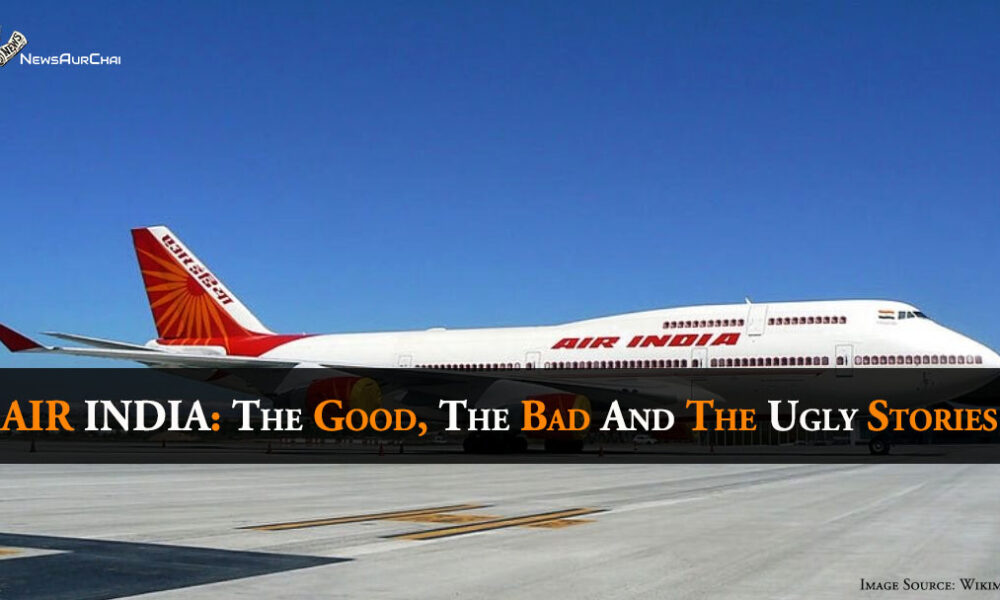The Maharaja treatment; from promises of laptops for business class passengers to the all women-crew on women’s day and of course many reports of cockroaches on the plate – Air India has managed to cover it all.
It is also often referred to as the warm hug among the Arline industry- not because of its hospitality but rather because of the lack of air condition in its planes and it’s “Air-dadi’s”.Several comedians have shared their terrible in-flight experiences and journey disasters; the kind of comedic material that is relatable.
People are just not satisfied with the quality of the airline’s service, as compared to how it was 73 years ago. The Government decided to sell 100 per cent share of the airline and started its preparation in late-2019. On January 27, 2020, the Expression of Interests (EOI) was released to invite bidders.
After World War II, regular commercial service was restored in India, and Tata Airlines became a public limited company in 1946 under the name Air India. After Indian independence, 49 per cent of the airline was acquired by the Government of India in 1948. There were multiple aircraft failures and crashes from (1950-1990) that had people terrified, which had made them not to board an Air India plane. The most notable crash happened in 1985– terrorist bomb attack in which 307 passengers and 22 crew members had lost their lives.
A trip down memory lane:
- Nationalisation – In 1953, the Government of India passed the Air Corporations Act and purchased a majority stake in the carrier from Tata Sons.
- 2000-01– Attempts were made to re-privatize the airline.
- 2001– Ministry of Civil Aviation charged the then-managing director because of corruption. Losses had come up to Rs 570 million because of extra commissions that were sanctioned. In May 2004, Air India launched a wholly-owned low-cost subsidiary called Air-India Express connecting cities in India with the Middle East and Southeast Asia.
- 2007 – Invitation to join the Star Alliance.
Now, this is where the losses become way too out of hand.
- 2007 – 2009 – Air India and Indian Airlines had combined losses of around Rs 7.7 billion. After the merger, which turned out not to be a good idea, it became -72 billion.
- Attempts were made to reduce the debts by selling several aircraft it has not made any difference.
- 2011 – Losses accumulated to 426 Billion rupees, the operating loss was 226 billion, and it was seeking 429 billion from the government. The decision to buy 111 new aircraft and the ill-timed merger with Indian Airlines was the reason behind the unfortunate financial situation. In August, the invitation to join Star Alliance was suspended as a result of its failure to meet the minimum standards for the membership.
After a series of debt-laden trouble, the then government in 2013 had made up its mind to privatize the company yet again. As it was the only means for the company to survive. This was opposed by the BJP and the CPI (M)– the opposing parties. In January 2013, Air India cleared a part of its pending dues through funds raised by selling and leasing back the newly acquired Boeing 787 Dreamliners.
The Good Years for Air India
Things seemed to be going good, from the years 2014 – 2017. Air India a member of the Star Alliance once again, it signed an agreement to raise money to meet requirements, its revenue operating loss and net loss were Rs 198 billion, and it also became the third-largest carrier in India (after IndiGo and Jet Airways), with a market share of 13 per cent.
Privatisation
In 2017, the government (which once opposed this act) had approved the privatisation of Air India. A committee has been set up to start the process. In March 2018, government-issued (EOI) to sell 76 per cent stake of Air India along with Low-cost airline Air India Express. However, it did not receive a single bid from any private firm.
Having previously failed to sell the airline, the government decided to sell 100 per cent share of the airline and started its preparation in late-2019. On January 27, the current BJP government had released the (EOI) to invite bidders. This time to sell 100 per cent shares of both Air India and it’s budget carrier Air India Express, the government has already decreased nearly Rs 30,000 crore of debts.
Opposition’s Thoughts
The Shiv Sena slammed the Centre over its decision to sell its entire stake in Air India as it questioned the Bharatiya Janata Party-led government for failing to run the company. The Sena also warned that the staff of Air India should not suffer in the privatisation process started by the government. Employee unions have always opposed stake sale.
However, the government has held extensive meetings with the unions and tried to identify specific issues raised by them. Air India was once the pride of the country, but due to changing circumstances, the mountain of debt rose to Rs 80,000 – 90,000 crore.
Why can’t the government-run a company like Air India properly? How will consumers and employees be impacted?
The Centre has also come under attack by its lawmaker Subramanian Swamy who threatened to go to court against the sale, calling it anti-national.
It seems like the bidding is kept on the backbench for a little while now, as an Air India Jumbo plane is awaiting the decision, for the evacuation of Indian citizens in Wuhan Province China. If they are planning on selling it, why send a “government” aeroplane on an evacuation mission? Is the government re-thinking its decisions on the sale, or is it a one last rescue tactic to earn points among possible buyers?
